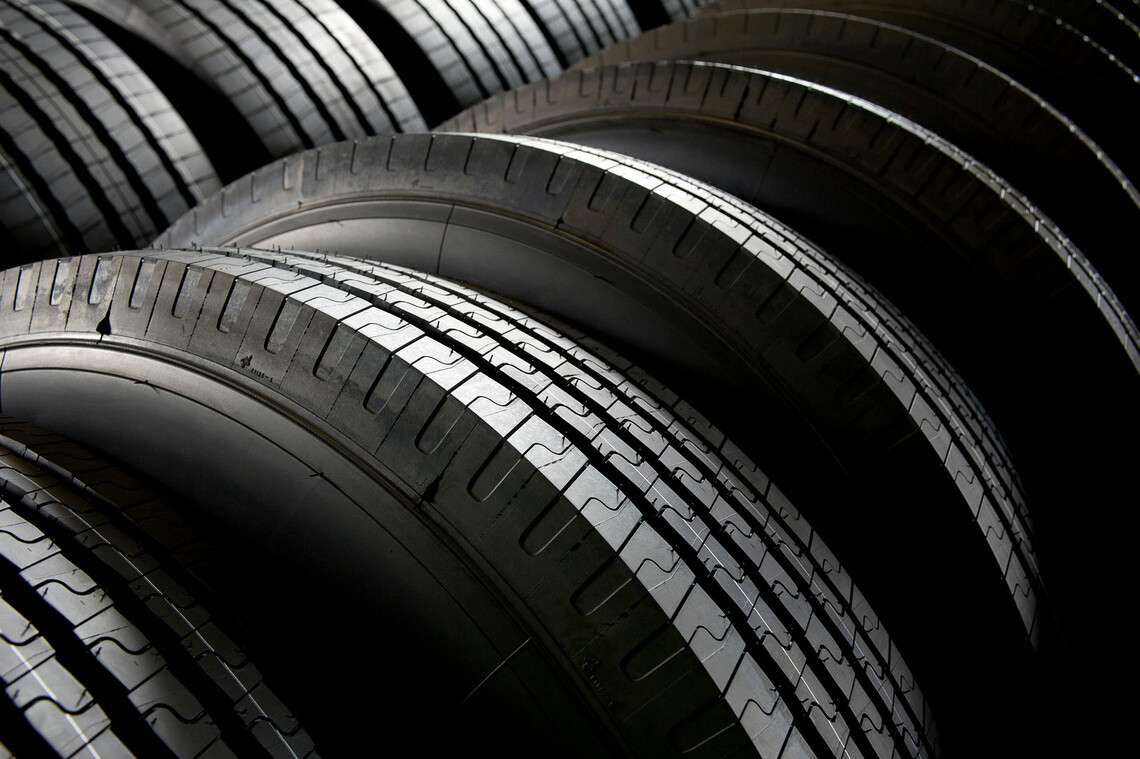
Truck tyre replacement proper and efficient practices
Working with damaged tire. Young truck driver is with his vehicle at daytime.
Truck Tyre Replacement: proper and efficient practices
The driver of one of your trucks notices that a tyre has a puncture or is in poor condition. He stops his vehicle in a safe place and calls for professional assistance. What happens during the breakdown service? What are the regulations on tyre replacement? What are our recommendations to ensure that transport can resume smoothly? Find the answers in our article.
SUMMARY:
What happens during truck tyre replacement service?
It is usually the dealer or the haulier's workshop that responds to the driver's call. Our MICHELIN ONCall service also offers fast and efficient roadside assistance for HGVs, 24/7 and anywhere in Europe.
Specialised mechanics then step in and perform the tyre change on the spot, using special machines to dismount and remount truck tyres.
These machines involve the use of lubricants on the beads and rim to avoid damaging the tyre.
The machine is equipped with a beak and a disc: the beak is used to mount and demount the tyre, while the disc is used to push to facilitate the operation.
After the tyre change, the level of wear is obviously not the same as with other tyres. As we said earlier, a tolerance is generally granted to allow the vehicle to return to its base for a final repair that will comply with the regulations.
What is a regulation-compliant tyre change?
The regulations concerning truck tyres are strictly framed to guarantee safety on the roads.
After a tyre repair on the spot, a tolerance is granted on the level of wear. This allows the temporary use of tyres that do not comply exactly with the wear criteria, so that the vehicle can return to its base.
Some countries, such as France, limit this difference in wear to a maximum of 5 millimetres. But even when this limitation is not a legal obligation, it remains Michelin's recommendation. If this is defined in your country, it is the carrier's responsibility to ensure that his vehicles comply with this limit to avoid penalties and guarantee driver safety.
However, this tolerance is temporary. It is imperative to bring the vehicle back into compliance quickly after the breakdown. This involves a tyre replacement with one that meets all the required standards, to avoid any imbalance and ensure even tyre wear.
Let's take a look at these mandatory standards.
1- Same brand, size and category of use
Replacement tyres must meet a number of criteria to comply with the regulations.
They must be of the same make and size. The category of use of the tyres must also be identical, i.e. both standard on road or both snow or both off-road.
But these are not the only requirements imposed by the legislation.
2- Same structure and same load and speed ratings
Replacement tyres must also have the same structure (radial or diagonal) and the same load and speed ratings.
The load rating indicates the maximum weight the tyre can support, while the speed rating indicates the maximum speed at which the tyre can be driven safely.
These criteria ensure that the tyres on the same axle work uniformly and provide a stable and safe ride.

tyre truck stock 2
3- Compliance with twinning criteria
When performing a tyre change, it is also crucial to check that the tyres fitted comply with the twinning criteria. For example, if a tyre of a specific brand is fitted to an axle, its twin must be of the same brand, size and range.
In addition, retreaded tyres must match new tyres in terms of structure and performance.
Note that regulations may vary slightly from one country to another. Some are particularly strict about compliance with load and speed ratings, as well as the compatibility of tyres mounted on the same axle. Hauliers therefore need to remain vigilant and keep informed of regulatory developments to ensure that their vehicles are compliant.
Is balancing recommended after truck tyre replacement?
The answer is yes. Balancing tyres after a tyre change is strongly recommended to avoid vibrations and uneven wear.
Front tyres should always be balanced, and the vehicle's geometry checked if necessary. Although it is not systematic, it is also advisable to balance rear tyres to ensure stability when driving.
How to get fast, efficient 24/7 service
MICHELIN ONCall service offers fast and efficient roadside assistance for HGVs, 24/7 and anywhere in Europe.
In the event of an incident, a simple call will give you a completely transparent cost estimate, with no surprises and no mileage limits.
A network of responsive professionals are committed to quality of service with Michelin, for an intervention on the road or in the nearest centre.
To watch this video, you'll have to accept some cookies from Youtube platform. Just click on the button below to open the cookie module.
Accept youtube cookiesOther articles to find out more:
Need more advice? Discover all MICHELIN truck tyre tips





